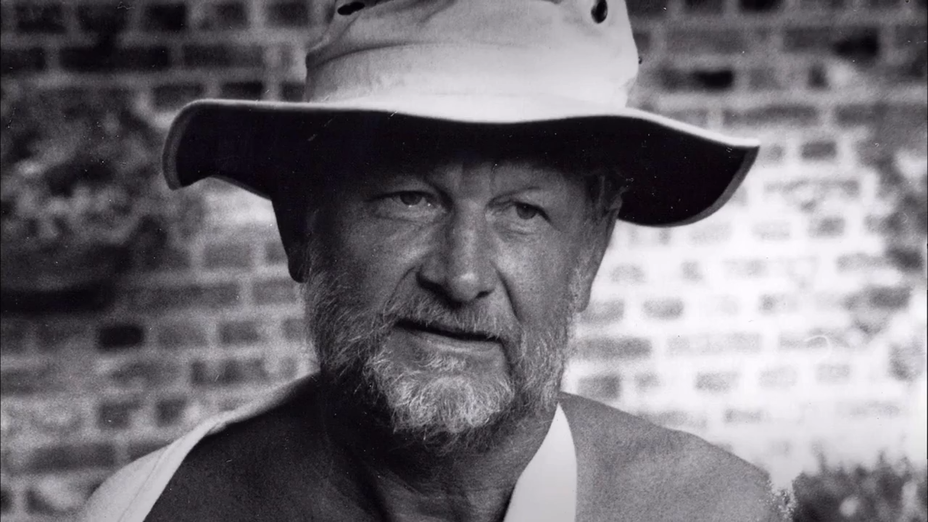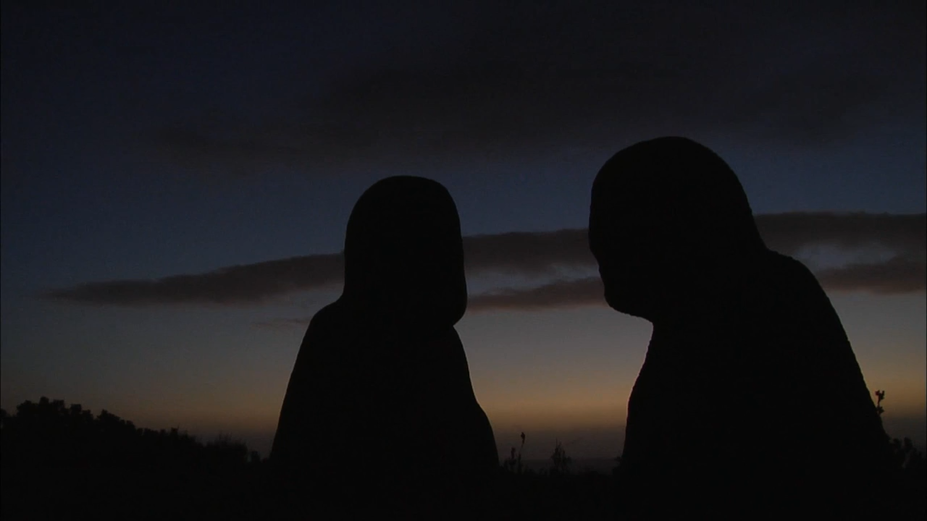Born in 1936 in Evergem, Flanders, he moved to South Africa in 1965 and decided to make South Africa his home. Over the years, he divided most of his time between South Africa and Belgium, punctuated by short visits, mostly by invitation to several other countries.
Van Nazareth arrived in Cape Town just over fifty years ago with just two bags, the one carrying only paint and brushes. He found shelter in the home of a fellow Belgian, Father Frans Claerhout.
Fired by his disapproval of the abuse of power and inhumane behavior within society, Herman van Nazareth started his career in the early 1960s as an artist with brush and sculpture, depicting a unique version of resistance to domination and power-mongering.
His art career began at the Royal Academy in Ghent in 1961, where he studied formal art. This was followed by further studies at the Royal Academy in Antwerp. In 1965 he joined the Michaelis School of Art in Cape Town and focused on sculpture.
On completion of his first degree at the Michaelis School of Art, Van Nazareth decided to remain in South Africa and enrolled for postgraduate studies this School. Only late in his postgraduate work did he receive a Bursary due to a student support agreement between Belgium and South Africa.
Despite his international fame, several international publications cataloguing his work, his documented contribution to the evolution of South African art, his critical acclaim within the international art fraternity over the years, his resistance to authoritarianism and discrimination and his identification with the oppressed in his art, Van Nazareth has not received the official and public recognition he deserves in South Africa.

Various reviews that appeared about the work of the young artist between 1965 and 1970 provide an overview of the contribution he made to South African art. In the Cape Argus of 17 September 1965, critic Neville Dubow wrote a column under the heading “Urgent Cry in Age of Fear”, describing Van Nazareth as an outstanding painter of disturbing figures drawn from the dark, grainily sealed surfaces of his paintings”. According to Dubow, Van Nazareth depicts the neglect of a neurotic century, as well as people who had become victims of underlying fear. He recognizes an extraordinary northern (Dutch) expressionism in Van Nazareth’s work as reflecting a great admiration for Edvard Munch.
The South African art critic Johan van Rooyen writes in the Cape Times of May 5, 1967, about the lack of torture but the grief of vision in Van Nazareth’s paintings and his affection with the gloomy aspects of life. On the other hand, the simple horizontal compositions of his landscapes show dramatic explorations in which the influence of Flemish and German expressionism is noticeable. Van Rooyen believed that the diminished scale of Van Nazareth’s paintings gives greater subtlety, however, a stronger expression and that there is a tension that is only only arises from the specific use of colours.
In an article in the Cape Argus of 27 November 1967 entitled “Herman van Nazareth – a bomb at complacency”, Neville Dubow wrote as follows: “Herman van Nazareth is concerned with power, with how it corrupts, with the facelessness of those who wield it and the mindlessness of those who put up with it “. In South Africa, we would later realize the true meaning of his words and their relevance to our country. Eldred Green’s commentary on one of van Nazareth’s works in the Cape Argus of August 3, 1971, was: “ the Chairman of the Board … clad expensively in blue raiment beneath a countenance mottled by the best of old brandy”. Green also describes Van Nazareth’s three landscapes as “among the finest produced at the Cape since the war”.
In an overview in the Cape Argus of May 13, 1972, Owen Williams writes about Herman van Nazareth’s “new fields in art”, stating: “… his landscapes have become soft and glowing and he has developed a market talent to evolve the magic of flesh in a series of huge female nudes, which positively burn with sensuality. “
In the Cape Argus of May 16, 1974, the South African painter and critic Anna Vorster described Van Nazareth’s paintings exhibited at the International Gallery in Cape Town as “… beautiful surfaces, haunting works …. The heads are archetypical portraits that seem to exist in infinite space like icons …. De-austerity and pitiless severity of Nazareth’s early heads and figures, painted and sculpted, may indicate anguish and menace but they can also stand as bold sculptural forms, shapes sharing the viewer’s space or aesthetically activating the environment. “

Herman van Nazareth can be regarded as a South African artist. He was enrolled in postgraduate studies and contributed to the development of a new and modern way of expression or painting in South African art. From his arrival in South Africa, his work was influenced by this country’s socio-political context. His work is represented in numerous corporate and public art collections in the country and his name is proudly included in the catalogue of national art exhibitions. In 1969 he exhibited at the Five Years Exhibition of South African Art and in 1971 at the Republican Festival. He represented South Africa at the 1971 Sao Paolo Biennale and was honored at the Pretoria Art Museum in 1976 with a prestigious exhibition.
In the first comprehensive book on South African Art History, Art and Artists of South Africa, Esmé Berman makes mention of Herman van Nazareth as an artist who helped shape South African art. He shares his time between Belgium and South Africa. In Belgium, a museum is currently being built to house his work. He lives and works in Jakkalsfontein on the West Coast where he has a studio displaying his work.
Is he the first or one of the first South African resistance artists? Strictly speaking, Van Nazareth cannot be classified as a South African prototype artist, because despite his striking satirical commentary, his representations are not openly political. Although he had a strong disapproval of apartheid and was very aware of the social circumstances in the country, his subjects did not directly comment on the South African struggle. He is concerned with universal issues rather than with specific problems. Especially his heads and figures provide profound social commentary, and in his early landscapes he looks at dark times. So, resistance artist? Yes, he is – but linked more to a bigger, global narrative of injustice and inhumanity by elites upon all others in society.
This artist’s exposure to the cruelties of the Second World War and to European liberalism give rise to his sense of aversion to the abuse of power and any kind of inhumanity. His experience of a free socio-political discourse within international art, influences his strong views on domination, bad leadership and powerlessness everywhere.
He is one of the very first artists to be called a resurrected artist in the late sixties. His imagery is universal, however, and the message of his shameless, bulky creatures, which Melvyn Minnaar in the Cape Times of February 2, 2005 calls “faceless sombre lumpy brutes”, is just as strong and valid in today’s democratic society as it was in the sixties. Nazareth’s subjects represent the timeless principle that “when abuse is abused” and not dealt with, freedom cannot be dealt with to the point of it being realised.
For him it is extremely important to maintain the integrity of his own art. His view is that if an art exhibition does not meet this standard, he will rather take his paintings off the wall (as he indeed did in 1969 at the Five Yearly Exhibition of South African Art in Cape Town), than to deceive the public and impart false values. He is a man of few words but does not turn back from complacency and hypocrisy to suffer those seen to be fools fooling themselves. Melvyn Minnaar describes him as a stug; An artist “whose forcefulness in appearance and temperament was often a prickly presence in the smoochy art establishment” (Minnaar, Cape Times, November 9, 2004).
“Exuberance/Uitbindig/Uitbindigheid”
This work by Van Nazereth depicts the people of District Six on a Friday night: the weekly grind has given way to exuberance. The onset of the weekend sets talent, creativity and joyous expression free in of song, dance, humour and even abandon; including abandonment of the threatened pain of forced removal from the heart of south Africa’s mother city.
The placement of the iconic sculpture by Belgian-South African artist Herman van Nazareth outside the Nasionale Pers/Media 24 building on the foreshore at the bottom of Adderley Street, was a significant step towards the creation of a new urban identity for Cape Town.
The monumental bronze sculpture entitled “Exuberance/Uitbindigheid” stands more than seven meters tall and features two celebratory figures in a symbiotic expression of energetic celebration. The work itself is political and dates back to the late 1960s, when the artist was directly addressing and challenging Nationalist policies. The choice of a rich black patina is symbolic in representing African brotherhood, the struggle for freedom and the inevitability of victory which beckoned for the oppressed masses in South Africa and across the continent. Today, in a new context the timelessness and universality of the work resonates, adding vibrancy and energy to the once sterile and vacuous inner city.
The sculpture was initially destined for the new Cape Town Stadium in Green Point in time for the 2010 World Cup. Due to a series of bureaucratic and other complications, the expensive artwork was temporarily homeless. The timely and visionary intervention of Nasionale Pers/Media 24 ensured a more appropriate and home outside their head office on the Cape Town forshore. It now has pride of place outside the Artscape Buiding.
Herman van Nazareth has enjoyed a highly successful international career. He has always remained loyal to South Africa, where he studied in the sixties and started his career. Van Nazareth has recently enjoyed renewed attention in South Africa. A number of important works have been included in a major 2010 exhibition of South African sculpture entitled “Twenty: Two Decades of South African Sculpture”, at the impressive Nirox Sculpture Park set in the majestic Cradle of Humankind, Magaliesberg, Gauteng. His work was also included in the controversial historical exhibition on show at the Iziko National Gallery (From Pierneef to the Gugulective: South African Art 1910-2010). The following year, the SMAC Art Gallery presented a second retrospective exhibition of the artist in this country that coincided with his 75th birthday.
Recognising the opportunity to create an enduring statement and a landmark to the new Cape Town, Nasionale Pers/Media 24 facilitated the visionary placement of this timeless sculpture by Herman van Nazareth. The test of a great public artwork is whether it can make a relevant and powerful statement to its citizens and visitors alike, without dominating or imposing itself. Van Nazareth’s work feels contemporary and historic at the same time, it reminds of painful history but inspires an optimistic future. It feels as though it has always been there.
The extension of the CTICC however necessitated the moving of the sculpture to make way for the new wing of the CTICC. In moving the sculpture to the open space in front of the Artscape Theatre, it introduces the sculpture to visitors and creates the impression that the sculpture forms part of the original design and planning of the Artscape Complex.
“Exuberance/Uitbindigheid” was unveiled on Friday 25 June 2010. Mr Ton Vosloo, chairman of Nasionale Pers/Media24 delivered the opening address.
